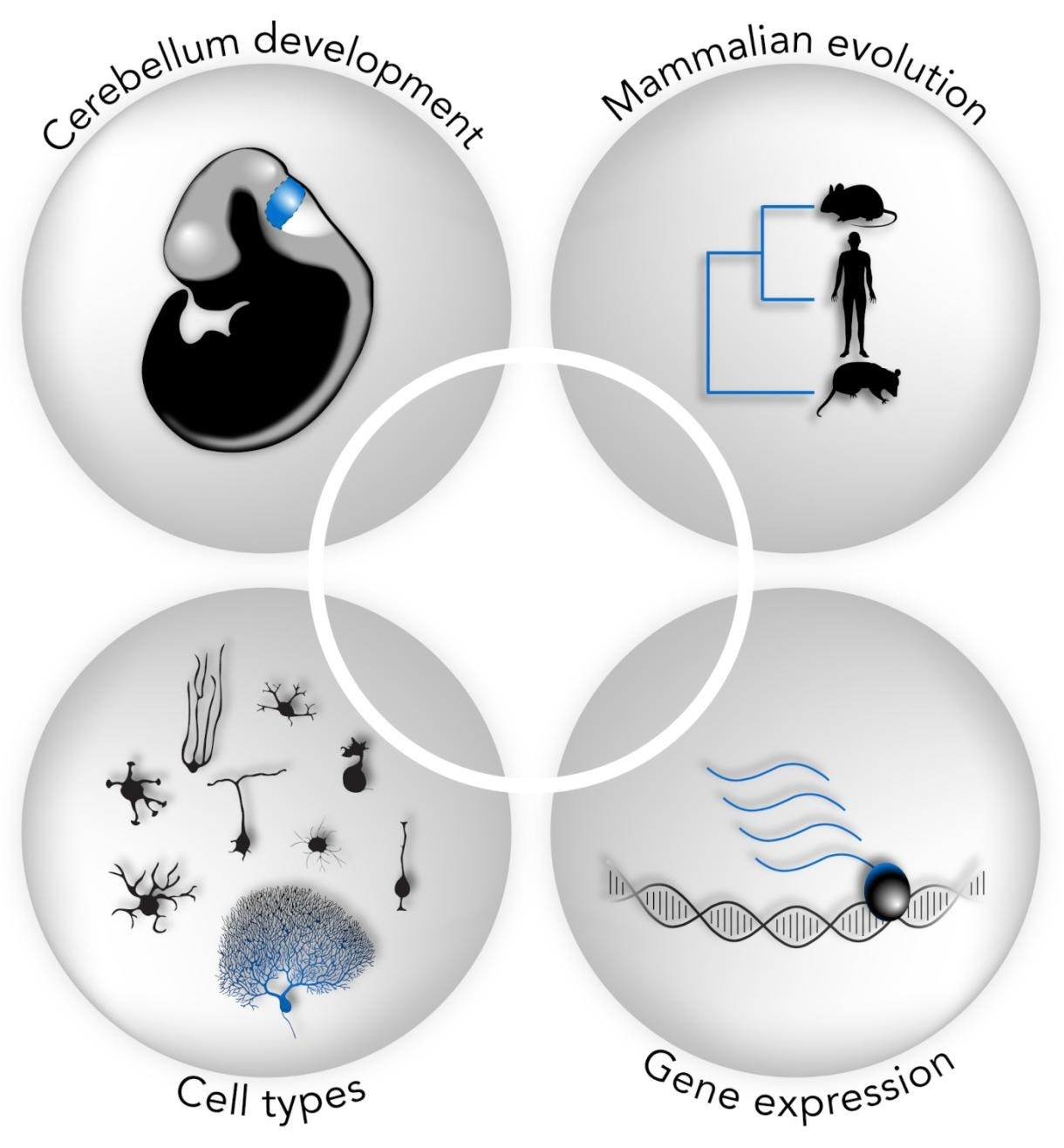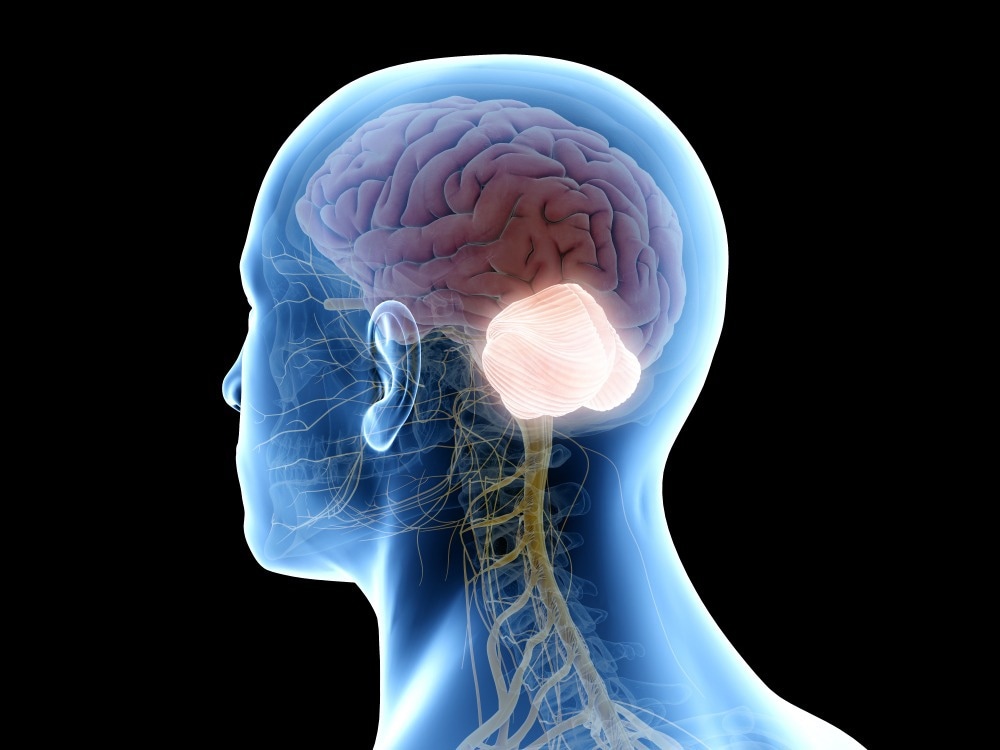Reviewed by Danielle Ellis, B.Sc.Nov 30 2023
The development of advanced cognitive functions in humans has primarily been associated with the growth of the neocortex, a brain region responsible for conscious thought, movement, and sensory perception.
 Genetic maps of the development of cells in the cerebella of human, mouse, and opossum shed light on ancestral and species-specific cellular and molecular characteristics of cerebellum development. Image Credit: Mari Sepp.
Genetic maps of the development of cells in the cerebella of human, mouse, and opossum shed light on ancestral and species-specific cellular and molecular characteristics of cerebellum development. Image Credit: Mari Sepp.
However, researchers are increasingly recognizing the role of the “little brain,” or cerebellum, in this evolutionary process. Professor Dr Henrik Kaessmann from the Center for Molecular Biology at Heidelberg University explains that the cerebellum also underwent expansion throughout evolution and likely contributes to unique human capacities.
Collaborating with Professor Dr Stefan Pfister from the Hopp Children’s Cancer Center Heidelberg, Kaessmann’s research team has produced comprehensive genetic maps detailing the development of cells in the cerebella of humans, mice, and opossums.
By comparing these data, they have uncovered both shared ancestral and species-specific cellular and molecular characteristics in cerebellum development, providing insights into over 160 million years of mammalian evolution.
Although the cerebellum, a structure at the back of the skull, contains about 80 percent of all neurons in the whole human brain, this was long considered a brain region with a rather simple cellular architecture.”
Dr Henrik Kaessmann, Professor, Center for Molecular Biology, Heidelberg University
However, the molecular biologist highlights a recent surge in evidence indicating significant diversity within this structure. The researchers in Heidelberg have undertaken a systematic classification of all cell types present in the developing cerebellum of humans, mice, and opossums.

Image Credit: SciePro/Shutterstock.com
To achieve this, they gathered molecular profiles from nearly 400,000 individual cells using advanced single-cell sequencing technologies. Additionally, they utilized techniques that allowed for the spatial mapping of these cell types.
Upon analyzing these data, the scientists observed that, during the early stages of fetal development, the human cerebellum exhibits an almost twofold increase in the proportion of Purkinje cells – large, intricate neurons crucial to cerebellar function – compared to mice and opossums.
This elevation is predominantly attributed to specific subtypes of Purkinje cells generated early in development, which likely establish communication with neocortical areas associated with cognitive functions in the mature brain.
It stands to reason that the expansion of these specific types of Purkinje cells during human evolution supports higher cognitive functions in humans. Functional evolution of mammalian genomes”.
Dr Mari Sepp, Postdoctoral Researcher, Heidelberg University
Using bioinformatic methods, the researchers conducted a comparative analysis of the gene expression programs within cerebellum cells of humans, mice, and opossums.
These programs are shaped by the precisely orchestrated activities of numerous genes that dictate the specific cell types cells differentiate into during development. The researchers identified genes with cell-type-specific activity profiles that have been conserved across species for at least approximately 160 million years of evolution.
Henrik Kaessmann suggests that this conservation implies their significance in fundamental mechanisms determining cell type identities in the mammalian cerebellum. Concurrently, the scientists also pinpointed over 1,000 genes with activity profiles that vary between humans, mice, and opossums.
At the level of cell types, it happens fairly frequently that genes obtain new activity profiles. This means that ancestral genes, present in all mammals, become active in new cell types during evolution, potentially changing the properties of these cells.”
Dr Kevin Leiss, Doctoral Student, Heidelberg University
Among the genes exhibiting distinct activity profiles between humans and mice, the primary model organism in biomedical research, several are linked to neurodevelopmental disorders or childhood brain tumors, explains Professor Pfister.
Serving as a Director at the Hopp Children’s Cancer Center Heidelberg, leading a research division at the German Cancer Research Center, and functioning as a consulting pediatric oncologist at Heidelberg University Hospital, Professor Pfister emphasizes the potential significance of the study’s findings.
Pfister suggests that these results could offer valuable insights for identifying alternative model systems, extending beyond the mouse model, to advance the exploration of such diseases.
Source:
Journal reference:
Sepp, M., et al. (2023) Cellular development and evolution of the mammalian cerebellum. Nature. doi.org/10.1038/s41586-023-06884-x.